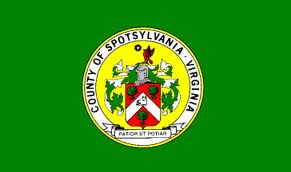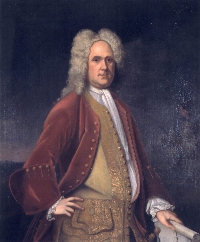About Spotsylvania
 Spotsylvania County’s 407 square miles contain a mix of beautiful rural landscape alongside an energetic, growing community. Spotsylvania is one of Virginia’s fastest-growing counties, largely because of its desirable location along Interstate 95, midway between metropolitan Washington and Richmond. 2010 U.S. Census figures indicate an estimated County population of 122,397.
Spotsylvania County’s 407 square miles contain a mix of beautiful rural landscape alongside an energetic, growing community. Spotsylvania is one of Virginia’s fastest-growing counties, largely because of its desirable location along Interstate 95, midway between metropolitan Washington and Richmond. 2010 U.S. Census figures indicate an estimated County population of 122,397.
Known as the “Crossroads of the Civil War,” Spotsylvania County is rich in historical resources. The County welcomes visitors to Fredericksburg and Spotsylvania County Battlefields National Military Park — Chancellorsville, Fredericksburg, Spotsylvania Courthouse, and Wilderness battlefields. In the Spotsylvania Courthouse area, the Historic Courthouse, Old Jail and Spotsylvania Museum are among the scenic attractions.
Lake Anna offers 13,000 acres of swimming, sailing, water-skiing and sport fishing. At the Lake Anna State Park, visitors and the community enjoy picnicking, horseback riding, bicycling, hiking trails and camping. Other natural attractions include the Ni River Reservoir and the Hunting Run Reservoir. Community gathering places for sports, music and other outdoor activities include the County’s award-winning Patriot Park and the popular Loriella Park, with its lighted sports fields and swimming pool.
The growing Spotsylvania community has attracted many dynamic commercial and retail businesses which serve area residents and visitors. But that’s just the beginning…
Click Here for a business profile PDF of our County
Spotsylvania County — a great place to live, work, play and shop!
Spotsylvania and Its Legacy of Business…
 Three counties were formed in 1720 in the Rappahannock River watershed upstream from the Fall Line – King George, Hanover, and Spotsylvania. Settlement in the area was spurred after Governor Spotswood led an expedition in 1716 to the Shenandoah River, and by his efforts to negotiate peace with the native Americans.
Three counties were formed in 1720 in the Rappahannock River watershed upstream from the Fall Line – King George, Hanover, and Spotsylvania. Settlement in the area was spurred after Governor Spotswood led an expedition in 1716 to the Shenandoah River, and by his efforts to negotiate peace with the native Americans.
His expedition was quite a party, with numerous toasts of brandy and claret. It was celebrated afterwards by Spotswood granting miniature golden horseshoes to the participants (though King George made him pay for them). Spotswood knew how to attract buyer attention in the days before digital billboard signs cluttered modern highways.
Spotswood’s support for settling the uplands, including negotiations with the native Americans for peace, stimulated growth in an area in which he personally had been patenting thousands of acres. Spotswood recruited refugees from the Palatinate in Germany, the original kingdom of George I’s grandfather, in order to operate his iron mines at Germanna.
Spotswood took over as Lieutenant Governor (the formal Governor was the Earl of Orkney, who pocketed half the pay but never actually visited Virginia) in 1710. He progressed through several stages of disputes with the House of Burgesses and the Council of State, finally ending up as an ally of the large merchant-planter families emerging as the Virginia aristocracy.
There was a telling moment when it became clear that Spotswood was no longer seeking to fight the large landowners. In April 29, 1720, he had been arguing loudly for two hours with Commissary Blair and Philip Ludwell, when he suddenly changed his tone and requested real friendship instead of conflict. Spottswood hosted a grand dinner at the new Governor’s Palace, musicians played, toasts were drunk, and peace broke out.
When it was clear that Spottswood was about to be replaced by a new Lieutenant Governor, the members on the Council of State helped him double his landholdings by patenting to him 40,000 acres in Spotsylvania County. [Others received 179,000 acres at the same time...] Rather than returning to England at the end of his term like his predecessors, Spottswood stayed in Virginia – with his 85,000 acres to manage.






